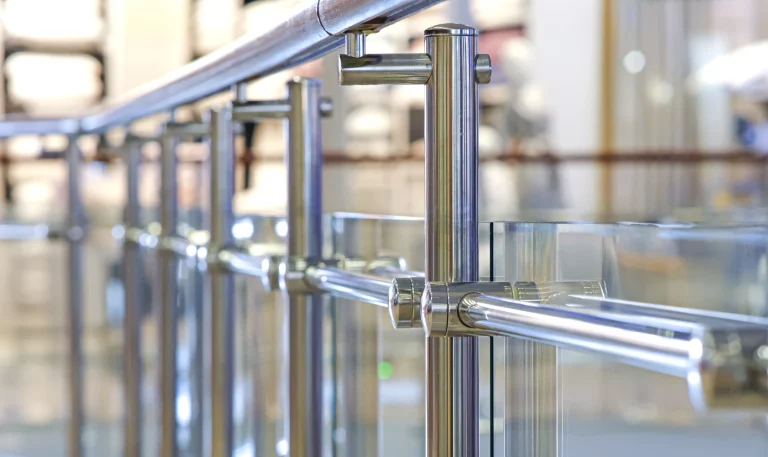In the realm of architecture and design, the use of metals has been a staple for centuries. One intriguing aspect that often captures the attention of both architects and enthusiasts is the concept of architectural metal patina. But what is architectural metal patina? Simply put, it refers to the natural or artificial aging process of metals, resulting in a change of color and texture that adds a unique character to the material. This transformation is not just about aesthetics; it enhances the durability and longevity of the metal, making it a favored choice in various architectural applications.
The primary keyword, ‘What is architectural metal patina?’ is crucial as it sets the tone for our exploration into the fascinating world of metal patination. By understanding how patina forms and its applications in architecture, we can appreciate its role in creating timeless and captivating structures.

The Science Behind Metal Patina
Patination occurs when metals such as copper, bronze, and brass are exposed to environmental elements like air and moisture. Over time, these metals develop a thin layer of oxidation that alters their surface appearance. This process can be naturally occurring or deliberately induced through chemical treatments.
Natural Patination
In natural patination, metals are left to age gracefully under the influence of nature. For instance, copper roofs turn a distinctive green due to the formation of copper carbonate. This gradual change not only enhances the visual appeal but also provides a protective shield against further corrosion.
Artificial Patination
Artificial patination involves the use of chemicals to accelerate the aging process. Architects and designers often opt for this method to achieve specific colors and finishes within a shorter timeframe. Techniques such as acid washing and heat application are common practices in artificial patination.
Applications of Patina in Architecture
Metal patina is widely used in architectural projects for its aesthetic value and protective properties. From building facades to interior elements, the applications are vast and varied.
Exterior Applications
On exteriors, patinated metals are often used for roofing, cladding, and decorative elements. The patina not only adds visual interest but also contributes to the building’s sustainability by extending the lifespan of the metal components. For more on modern applications, learn about modern designs.
Interior Applications
Inside buildings, patina can be found on fixtures, staircases, and accent pieces. The rich textures and hues of patinated metals add warmth and sophistication to interior spaces, creating a harmonious blend of history and modernity.
Benefits of Using Patinated Metals
The benefits of using patinated metals in architecture go beyond aesthetics. They offer a range of advantages that make them a preferred choice for many designers.
Durability and Protection
Patina acts as a protective layer, shielding the underlying metal from environmental damage. This increases the longevity of the material, reducing the need for frequent maintenance and replacements.
Environmental Sustainability
Using patinated metals is an eco-friendly choice. The natural weathering process requires no additional resources, and the extended lifespan of these materials contributes to sustainable building practices.
Aesthetic Appeal
The unique and varied appearance of patinated metals offers endless design possibilities. From subtle earth tones to vibrant blues and greens, the color palette of patina is as diverse as it is beautiful. For inspiration on how patina can transform a space, visit architectural louvers.
Challenges and Considerations
While the benefits are numerous, there are challenges to consider when working with patinated metals.
Cost Implications
The process of patination, especially artificial methods, can be costly. It requires skilled labor and specific materials, which can increase the overall project budget. For insight into cost management, check out estimating fabrication costs.
Maintenance Requirements
Although patina offers protection, it doesn’t make the metal maintenance-free. Regular cleaning and inspections are necessary to preserve the patina and prevent underlying corrosion.
Popular Metals for Patination
Several metals are commonly used for patination due to their reactive properties and aesthetic potential.
Copper
Copper is perhaps the most iconic metal for patination. Its transformation from a shiny reddish-brown to a verdant green is both striking and symbolic of endurance.
Bronze
Bronze, an alloy of copper and tin, develops a warm, brownish patina that enhances its timeless appeal. It is often used in sculptures and decorative elements.
Brass
Brass offers a golden hue when freshly polished, but with patination, it takes on a deeper, antique look that is highly sought after in interior design.
Conclusion
In conclusion, architectural metal patina is a powerful design tool that marries beauty with functionality. It transforms ordinary metals into extraordinary works of art, adding depth and character to architectural projects. By embracing the natural and artificial processes of patination, architects can create structures that are not only visually stunning but also long-lasting and sustainable.
For a deeper understanding of metal processes, visit metal fabrication.

FAQ
What types of metals can develop patina?
Metals like copper, bronze, and brass are most commonly associated with patina. However, other metals can also develop patina under the right conditions.
Can patina be removed?
Yes, patina can be removed through mechanical or chemical means if desired, but doing so will expose the fresh metal beneath, which may then require protection.
Is patina a sign of damage?
No, patina is not a sign of damage. In fact, it serves as a protective layer that prevents further corrosion and degradation of the metal.
This article contains affiliate links. We may earn a commission at no extra cost to you.

